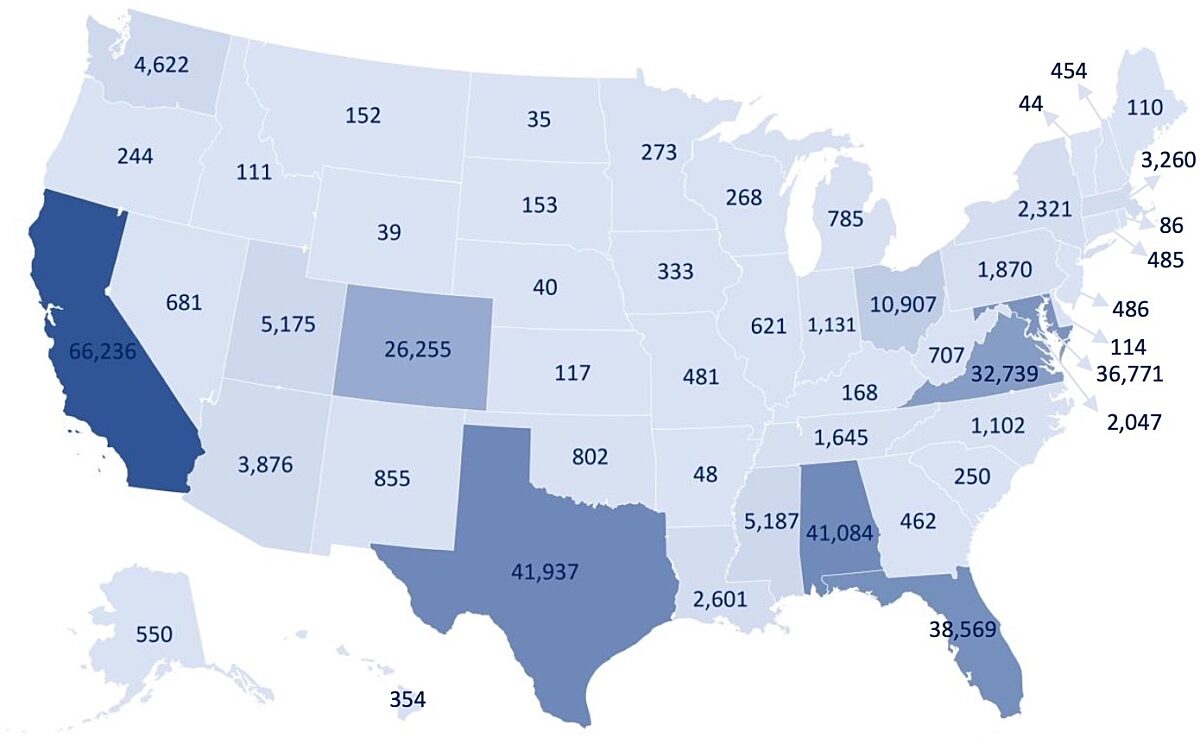Casey Dreier • Dec 02, 2022
NASA’s economic impact? Hundreds of thousands of jobs.
NASA released its latest economic impact report in October 2022, and it’s a doozy.
The report estimates that the U.S. space agency supports nearly 340,000 jobs across the country, jobs that pay higher-than-average salaries and invest in key industries like scientific research and advanced manufacturing.
The analysis, performed for NASA by researchers at the College of Urban Planning and Public Affairs at the University of Illinois, Chicago, shows that every state in the union is impacted positively by NASA. It demonstrates beyond a shadow of a doubt that investments in space are, ultimately, investments in the nation.
Some highlights of NASA’s impact during the 2021 fiscal year:
- An estimated 339,645 jobs were sustained by NASA across the country;
- For every full-time job located at a NASA facility, nearly 18 additional jobs were supported throughout the U.S. economy;
- These jobs paid more than the average in the U.S. economy, reflecting the highly skilled nature of the space exploration workforce;
- Approximately $7.7 billion in federal, state, and local tax revenues can be traced to NASA investments;
- California, Texas, Alabama, Florida, and Maryland are the most positively impacted states;
- NASA’s Moon-to-Mars campaign alone supports 93,731 jobs with an economic output of $20.1 billion. For every full-time employee working on Moon-to-Mars projects at a NASA center, 37 additional jobs are supported throughout the economy.
According to NASA’s Chief Economist, we can expect an updated report every two years.

To create this report, the authors applied a detailed economic model to analyze the impact of NASA’s expenditures. They used an established economic analysis technique called input-output modeling, which is an extension and elaboration of export base theory. Export base theory considers the economic activity within a certain geographical area and divides it into two groups: firms that provide goods and services to the local area, and firms that supply goods and services to locations outside that area. When external-supplying firms increase their output, local-supplying firms end up increasing their output as well.
Through the model, this results in a version of the famous multiplier effect: external demand into local area’s economy increases the local economic activity greater than the direct demand itself.
Consider a new NASA employee that moves to Alabama to work at Marshall Space Flight Center. This employee, paid by the U.S. treasury, spends their salary to live in Alabama. They buy coffee at a local café’ on the way to work, groceries on the way home, and perhaps a house for their family. They will pay state and local taxes on that income and those expenditures. The firms which sell them coffee and groceries, and the local polity that collects property tax on their house, may use those revenues to hire more employees to better serve this and other NASA employees; these employees themselves purchase items in their locality, driving more demand, which creates more demand for services, which need more labor, which….well, you get the picture. It multiplies.
The authors of the NASA economic impact report take a theoretical perspective of NASA not existing in the fiscal year studied. Some caution is warranted when looking at absolute dollar figures — the model is sensitive to how one classifies expenditures and to local effects of where the money is spent (e.g., more diverse local economies can supply more local services, so the multiplier is larger).
The core takeaway here isn’t the size of the multiplier (in this report, nationally, estimated to be roughly a factor of three), but instead the number and locations of jobs supported by NASA that are spread across the United States and the fact that they pay above-average wages consistent with high-skilled STEM fields critical to the nation’s future.
The multi-thousand page report (don’t worry, you don’t need to read it all!) has detailed analyses for every U.S. state for all of NASA’s impacts, work related to the Moon-to-Mars program, and work related to climate change research and technology development. If you live in the U.S., this report provides you with valuable data on how NASA invests money here in its effort to go out there.
Support our core enterprises
Your support powers our mission to explore worlds, find life, and defend Earth. You make all the difference when you make a gift. Give today!
Donate

 Explore Worlds
Explore Worlds Find Life
Find Life Defend Earth
Defend Earth

